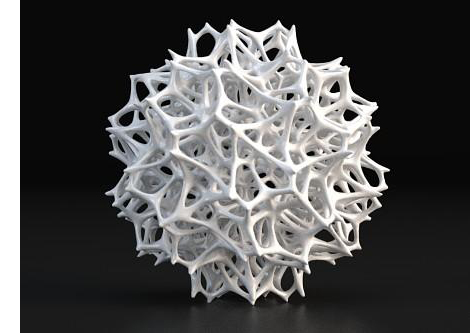5D Printing…….yeah, it’s a thing.
 In this newsletter, we’ve covered 3-D printing, which is pretty self-explanatory, and 4-D printing, which is 3-D printed objects that are then subjected to a fourth dimension, usually in the form of some environmental stimulation (water, electricity, time, etc.).
In this newsletter, we’ve covered 3-D printing, which is pretty self-explanatory, and 4-D printing, which is 3-D printed objects that are then subjected to a fourth dimension, usually in the form of some environmental stimulation (water, electricity, time, etc.).
But now, we have 5-D printing. Sort of.
5-D printing is not the addition of an additional dimension. Which is good, because then we’d have to rewrite every physics book in existence. A more accurate name for 5-D printing might be 5-axis printing.
Let’s start by looking at a few basics of 3-D object creation.
One way of creating a 3-D object is by employing a subtractive method of creation. Think of a stone carver. They subtract the material (the stone) as necessary and are left with their sculpted object. Or a woodworker using a lathe to create a spindle from a block of wood.
On the other hand, 3D-printing, along with 4-D and now 5-D printing, are based on additive printing. Layers of a substance (usually plastic) are simply added together by printing them out one on top of another to form an object.
The concept of 5-D printing begins with 3-D additive printing, and is augmented by the addition of two axes which come via a movable printer bed that rocks back and forth as required. When 3-D printer heads can approach the object from any angle, as opposed to just from above as with all standard 3-D printers, far more printing possibilities are available – and not just in terms of the overall shape of a finished object.
 Objects printed with by typical 3-D printers that use the layer-upon-layer method of printing, by design don’t always have a lot of structural integrity. When these objects are put under pressure in certain conditions, the weak points become apparent and the objects will collapse or break because of the way they were created. 5-D printers, however, allow designers to take those expected stresses into account and create a stronger object because the material is laid down from multiple angles and not just stacked on top on one another, alleviating the weak points.
Objects printed with by typical 3-D printers that use the layer-upon-layer method of printing, by design don’t always have a lot of structural integrity. When these objects are put under pressure in certain conditions, the weak points become apparent and the objects will collapse or break because of the way they were created. 5-D printers, however, allow designers to take those expected stresses into account and create a stronger object because the material is laid down from multiple angles and not just stacked on top on one another, alleviating the weak points.
5-D printing can also eliminate the sometimes-necessary task of having to “clean-up” an object after it’s been printed. In certain cases, objects printed with a basic 3-D printer must be printed with support pieces or other appendages left in place due to the top-down only access of a 3-D printer head. Because 5-D printer heads approach the object from multiple angles, those appendages need not be printed in the first place, saving time and material.
In January of 2018, one of the first 5-D, commercially available printers won a “Best of Innovation” award at the massive Consumer Electronics Show in Las Vegas – a sure sign that 5-D printing will be part of our lives someday, whether we realize it or not.
Return to the Tech Trends Newsletter

